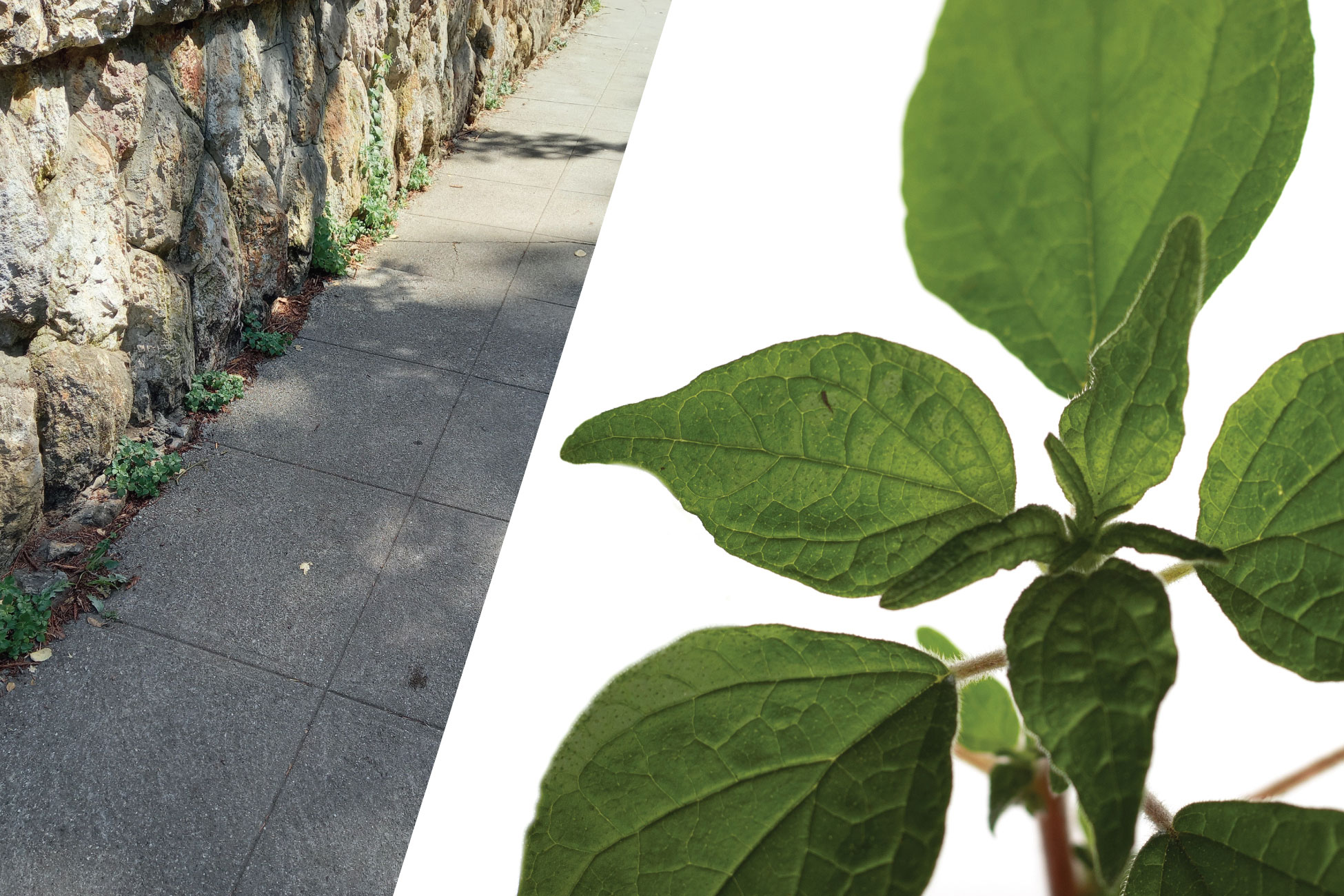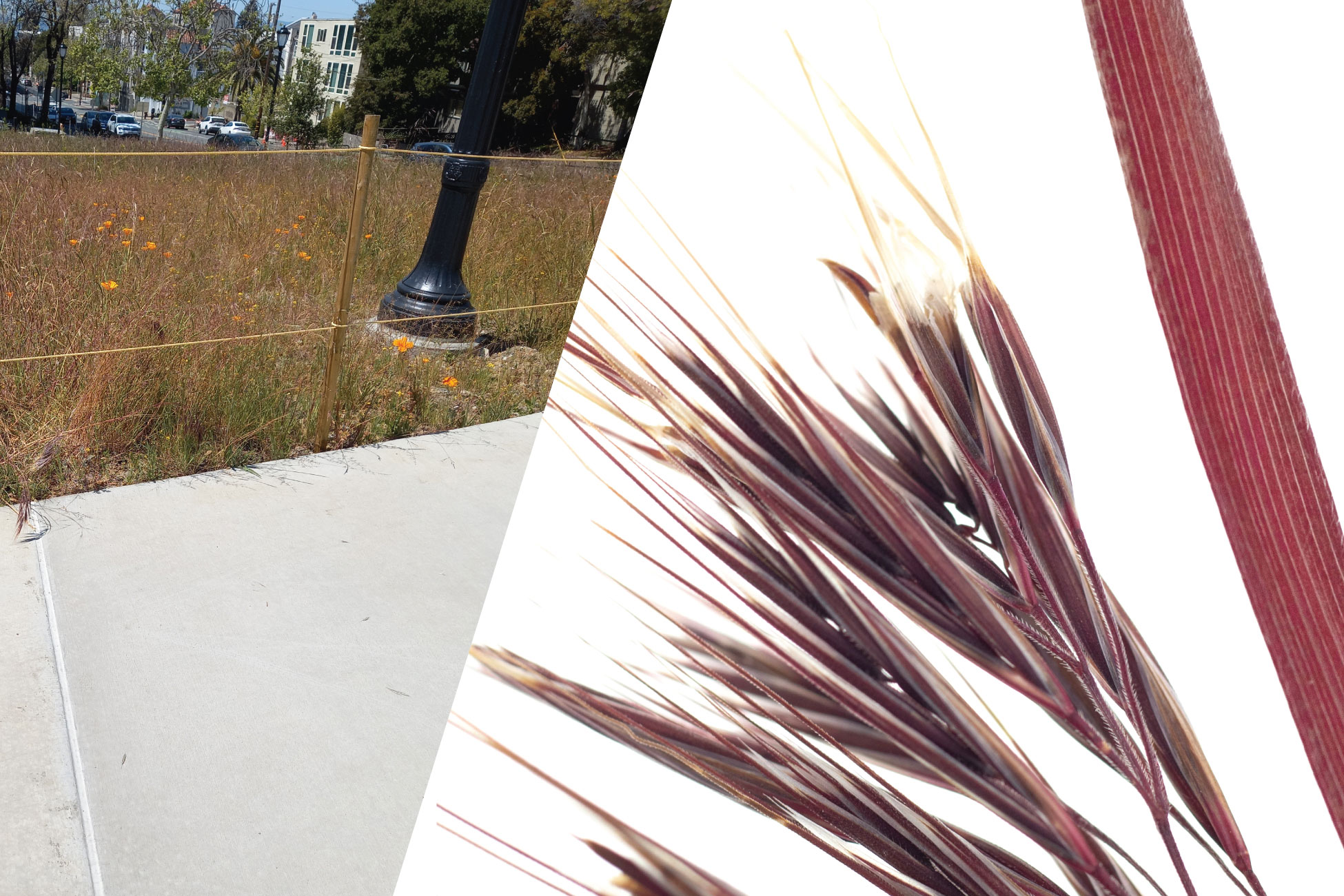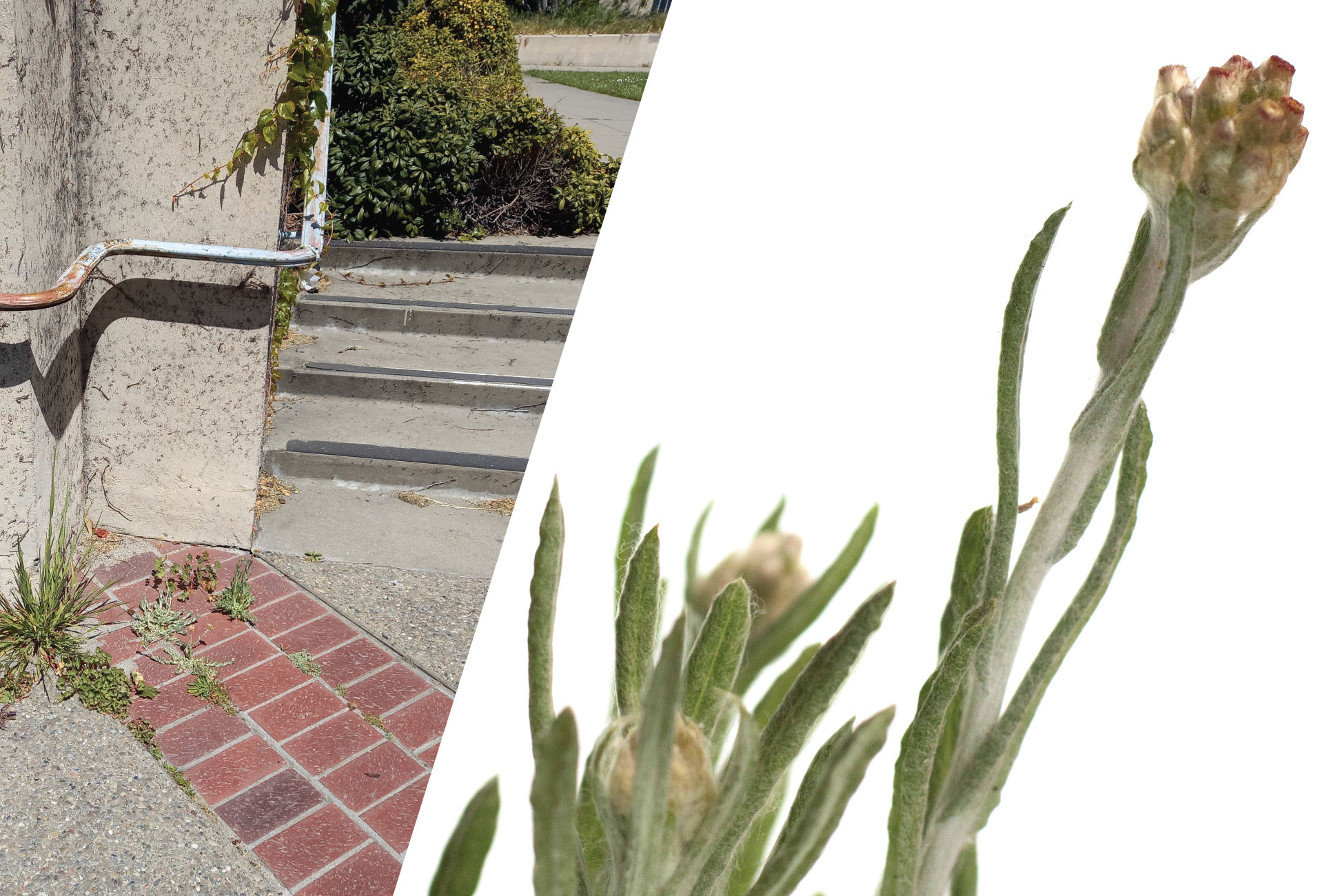










︎ SERIES
Weeds
Weeds in urban spaces are a perpetual interest of mine that has inspired a number of ongoing projects, including several that were a part of my MFA thesis. There is a great deal of metaphorical potential in weeds, due to their resilience, their disregard for borders, and their resistance to control measures taken against them. The category of weed is defined largely by undesirability and the condition of being out of place.1 The persistence of these out-of-context plants, despite this vilification, has caused some to romanticize them as an allegory for revolution.2 At the same time, the challenge that weeds present to norms and expectations of urban space has prompted them to be used throughout the history of the United States as problematic analogies for classes of unwanted people or neglected places.3
In his book about urban weeds, Zachary Falck argues that weeds are an unrelenting marker of ecological time.4 Although people have repeatedly tried to control the influence of ecological time in cities by regulating the landscape, weeds are continually defiant. Through several projects about urban weeds, I have tried to find ways to reintroduce viewers to these plant members of their communities, hoping to reframe the perceptions that people have of them and assert an increased connectedness to ecological cycles and a sense of place.
ABOUT THE IMAGES ON THIS PAGE
As my own recognition of the weeds around me grew, I sought out different ways of seeing them that could be slower and more deliberate. This led me to produce a series of photographic studies of weeds, wherein I would capture detailed images of them in situ. Using portable photography lights, light diffusion sheets, and a macro lens, I made the construct of close attention literal: offering detailed views of weeds, prompting appreciation for their unique qualities and overlooked beauty. However, something else happening in this gesture of documentation was that the weeds became completely divorced from their surrounding context, even though I was adamantly photographing them in place. To acknowledge this tension in these studies, each macro shot is shown with an unstaged photo of the environment in which the weed was found. The images depict the same subject, but the contrast between the framing highlights the degree to which cultural practices of looking and documenting shape perception.
- David Gissen, Subnature: Architecture’s Other Environments (New York: Princeton Architectural Press, 2009), 150.
-
Michael Pollan, “Weeds Are Us,” New York
Times, November 5, 1989, https://www.
nytimes.com/1989/11/05/magazine/weeds-are-us.html (accessed March 29, 2021).
-
Zachary J. S. Falck, Weeds: An Environmental History of Metropolitan America
(Pittsburgh: University of Pittsburgh Press,
2010), muse.jhu.edu/book/1987, 7.
- Falck, Weeds, 6-7.